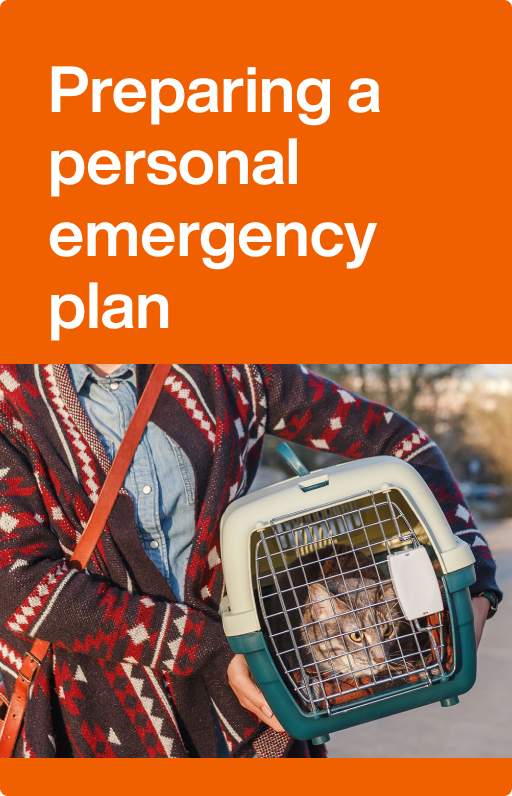Emergency advice: storms
Severe weather can remove roofs from buildings, break windows, damage vehicles, disrupt electricity supply and cause flash flooding.

What to expect from storms
Storms can happen anywhere at any time of the year and be any combination of strong winds, heavy rain, hail and lightning.
As a result, storms can pose a significant safety risk to people and animals. Potential hazards include flying debris, falling trees, large hailstones, lightning strikes and fast-moving floodwaters.
Storms may also restrict people or vehicles from moving around safely during and after the event.
You can help reduce the risk to you and your property from storms.
Be prepared
Get your home safe and ready. Check fences, roofs, and gutters and make any needed repairs. Trim branches near your home and powerlines. Clean gutters and downpipes regularly, and secure loose roof tiles.
Check you have adequate insurance cover for home and contents.
Develop a personal emergency plan and make sure everyone in your house knows the plan.
When a storm warning is issued:
- secure and put away loose items from around your property, including outdoor furniture and pot plants.
- move vehicles under cover and away from trees
- create a safe place for your pets
- disconnect all electrical items.
Contact neighbours and family members to ensure they're safe and prepared.
Tune into your local ABC radio station and listen for storm warnings and advice. Monitor Bureau of Meteorology weather alerts. These agencies monitor conditions and issue warnings about storm activity.
During a storm
Stay clear of creeks, drains, causeways, gutters, streams, fallen trees, powerlines and damaged buildings. In severe storm conditions remain indoors and stay clear of windows.
During an electrical storm do not use landline telephones, disconnect computers, televisions and other electrical appliances and secure pets in a safe place. If you're caught outdoors during an electrical storm:
- seek shelter in a hard top vehicle or solid building
- never shelter under a tree or group of trees
- if far from shelter, crouch down, don't lie flat
- if boating or swimming, leave the water immediately.
If you are driving, turn on your headlights and hazard lights, slow down and be aware of hazards on the road such as fallen powerlines and trees.
In severe driving conditions pull over to the side of the road keeping clear of drains, causeways, streams, creeks, trees and powerlines. If possible, seek shelter in your vehicle under a bridge, overpass or other large structure.
Never drive, ride or walk through floodwater.
For emergency assistance in storms and floods, call the NSW State Emergency Service (SES) on 132 500.
If you have information that could help others during a storm, contact your local ABC radio station and tell them what you can see – reliable first-hand knowledge can help other people.
After a storm
Tune into your local ABC radio station and listen for storm warnings and advice. Monitor Bureau of Meteorology weather alerts. These agencies monitor conditions and will issue warnings about any further storm activity.
There are some simple things you can do after a storm:
- Check your house or property for damage and if you need help call the SES.
- Stay clear of creeks, drains, causeways, gutters, streams, fallen trees and powerlines, and any damaged buildings.
- Do not go sightseeing as you may hamper the efforts of emergency services.
- Check to see if your neighbours and family members need help, particularly more vulnerable community members.
Review your personal emergency plan and update it with what you learnt from the previous storm event.
Further information about storms
The NSW SES website can help you develop:
The NSW Government's state storm plan details how emergency information is provided to agencies and service providers responsible for helping communities, particularly vulnerable people, during storms.
This information has been adapted from the ABC Emergency website and the NSW SES website.

